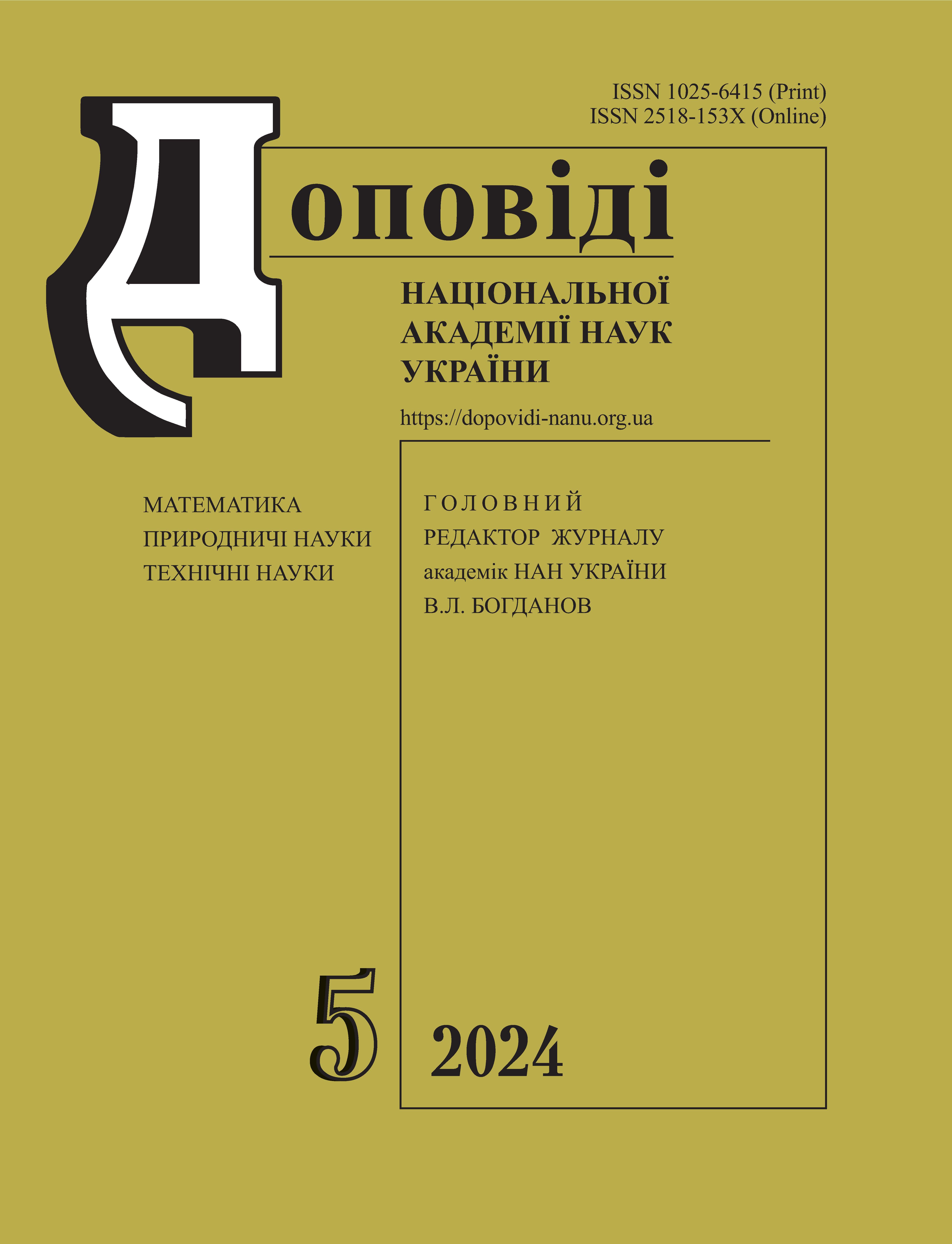КОМП’ЮТЕРНА МОДЕЛЬ ПОШИРЕННЯ ЦЕСТОДИ ECHINOCOCCUS MULTILOCULARIS В УКРАЇНІ
DOI:
https://doi.org/10.15407/dopovidi2024.05.019Ключові слова:
Echinococcus multilocularis, біокліматичне моделювання, УкраїнаАнотація
Альвеолярний ехінококоз, спричинений личинковою формою паразитичного черва Echinococcus multi- locularis, уражує широкий спектр видів тварин, як свійських, так і диких, і є високопатогенним гельмінтозом людини. Нещодавно розроблені карти придатності середовища існування цього паразита обмежені кордоном Європейського Союзу, Україна залишилась поза сферою дослідження. Метою роботи було змоделювати і детально охарактеризувати екологічну нішу E. multilocularis в Україні та оцінити ризики зараження E. multilocularis за поточних екологічних умов. З використанням набору даних CMCC-BioClimInd і баєсівського підходу до моделювання розроблено карту придатності середовища існування для виду в Україні і виділено відповідні зони ризику. Очікується, що ця модель буде корисним інструментом для виявлення паразита і допоможе зрозуміти епідеміологічну ситуацію щодо захворювання, особливо під час воєнних дій та масового переміщення населення на захід країни.
Завантаження
Посилання
Alvi, M. A. & Alsayeqh, A. F. (2022). Food-borne zoonotic echinococcosis: A review with special focus on epidemiology. Front. Vet. Sci., 9, 1072730. https://doi.org/10.3389/fvets.2022.1072730
Eckert, J. & Deplazes, P. (2004). Biological, epidemiological, and clinical aspects of echinococcosis, a zoonosis of increasing concern. Clin. Microbiol. Rev., 17, No. 1, pp. 107-135. https://doi.org/10.1128/CMR.17.1.107- 135.2004
Torgerson, P. R., Keller, K., Magnotta, M. & Ragland, N. (2010). The global burden of alveolar echinococcosis. PLOS Negl. Trop. Dis., 4, No. 6, e722. https://doi.org/10.1371/journal.pntd.0000722
Davidson, R. K., Romig, T., Jenkins, E., Tryland, M. & Robertson, L. J. (2012). The impact of globalisation on the distribution of Echinococcus multilocularis. Trends Parasitol., 28, No. 6, pp. 239-247. https://doi.org/10.1016/j. pt.2012.03.004
Gottstein, B., Stojkovic, M., Vuitton, D. A., Millon, L., Marcinkute, A. & Deplazes, P. (2015). Threat of alveolar echinococcosis to public health — a challenge for Europe. Trends Parasitol., 31, No. 9, pp. 407-412. https://doi. org/10.1016/j.pt.2015.06.001
Oksanen, A., Siles-Lucas, M., Karamon, J., Possenti, A., Conraths, F. J., Romig, T., Wysocki, P., Mannocci, A., Mipatrini, D., La Torre, G., Boufana, B. & Casulli, A. (2016). The geographical distribution and prevalence of Echinococcus multilocularis in animals in the European Union and adjacent countries: a systematic review and meta-analysis. Parasites Vectors, 9, Art. 519. https://doi.org/10.1186/s13071-016-1746-4
Cenni, L., Simoncini, A., Massetti, L., Rizzoli, A., Hauffe, H. C. & Massolo, A. (2023). Current and future distribution of a parasite with complex life cycle under global change scenarios: Echinococcus multilocularis in Europe. Glob. Change Biol., 29, No. 9, pp. 2436-2449. https://doi.org/10.1111/gcb.16616
Atkinson, J. A. M., Gray, D. J., Clements, A. C. A., Barnes, T. S., McManus, D. P. & Yang, Y. R. (2013). Environmental changes impacting Echinococcus transmission: Research to support predictive surveillance and control. Glob. Change Biol., 19, No. 3, pp. 677-688. https://doi.org/10.1111/gcb.12088
Williams, H.M., Egan, B. & Dittmar, K. (2016). A comparison of species distribution modeling approaches for an under-sampled parasite of public health importance, Echinococcus multilocularis. bioRxiv, № 068734. https://doi.org/10.1101/068734
Kharchenko, V. A., Kornyushin, V. V., Varodi, E. I. & Malega, O. M. (2008). Occurrence of Echinococcus multilocularis (Cestoda, Taeniidae) in red foxes (Vulpes vulpes) from Western Ukraine. Acta Parasitol., 53, No. 1, pp. 36-40. https://doi.org/10.2478/s11686-008-0008-9
Kornyushin, V. V., Malyshko, E. I. & Malega, A. M. (2011). The helminths of wild predatory mammals of Ukraine. Cestodes. Vestnik zoologii, 45, No. 6, pp. 483-490.
Veit, P., Bilger, B., Schad, V., Schafer, J., Frank, W. & Lucius, R. (1995). Influence of environmental factors on the infectivity of Echinococcus multilocularis eggs. Parasitology, 110, No. 1, pp.79-86. https://doi.org/10.1017/ s0031182000081075
Noce, S., Caporaso, L. & Santini, M. (2020). A new global dataset of bioclimatic indicators. Sci. Data, 7, Art. 398. https://doi.org/10.1038/s41597-020-00726-5
Rivas-Martinez, S., Rivas Sáenz, S. & Penas, A. (2011). Worldwide bioclimatic classification system. Global Geobotany, 1, pp. 1-634. https://doi.org/10.5616/gg110001
##submission.downloads##
Опубліковано
Як цитувати
Номер
Розділ
Ліцензія
Авторське право (c) 2024 Reports of the National Academy of Sciences of Ukraine

Ця робота ліцензується відповідно до Creative Commons Attribution-NonCommercial 4.0 International License.




